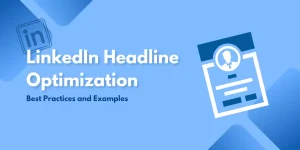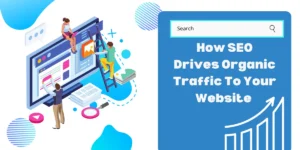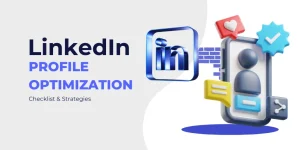Running Google Ads campaigns and want to know ways to improve conversion rates?
Let’s dive into how to turn clicks into conversions whether it’s a purchase, a sign-up, or any other action that benefits your business.
Conversion rates measure how many people who click on your ad take that next step.
The higher your conversion rate, the better your return on Ad Spent (ROAS) because you are making the most of the traffic coming through your ads.
Improving conversion rates is not just about getting more clicks it’s about ensuring those clicks lead to meaningful actions.
When your conversion rates improve, you get more value from every ad dollar spent, which ultimately boosts your campaign’s overall performance and helps you reach your business goals faster.
In this blog, we will explore ways to optimize your Google Ads to drive more conversions and see better results.
Optimize Landing Pages

For your Google Ads to be effective, your landing pages must match what your ads promise.
If someone clicks on your ad expecting one thing but finds something different on the landing page, they are likely to leave without taking any action.
This is why relevance between your ads and landing pages is important.
Ensure your landing pages are well-designed and user-friendly.
Key elements to focus on include:
- Clear CTAs (Calls to Action): Your landing page should have a clear, compelling CTA that tells visitors exactly what you want them to do, like “Sign Up Now” or “Buy Today.”
- Mobile Optimization: Many users access ads and websites from their phones. Ensure your landing page looks good and works well on mobile devices to avoid losing potential customers.
- Fast Loading Speeds: A slow-loading page can frustrate visitors and lead to high bounce rates. Ensure your page loads quickly to keep users engaged and more likely to convert.
Use Targeted Keywords

Choosing the right keywords is essential for attracting the right audience to your Google Ads.
Keyword research helps you understand what terms and phrases your potential customers are searching for, allowing you to tailor your ads to their needs.
- Importance of Keyword Research: By researching keywords, you find out which terms your audience uses to search for products or services like yours. This ensures your ads show up when people are actively looking for what you offer.
- Focusing on User Intent and Long-Tail Keywords: Long-tail keywords with longer, more specific phrases often indicate a higher level of intent from users. For example, targeting “buy running shoes for women” can attract users who are closer to making a purchase.
When it comes to maximizing the impact of your Google Ads, choosing the right keywords is crucial.
At Get Catalyzed, we specialise in helping businesses like yours identify high-intent, long-tail keywords that drive conversions.
Whether you’re looking to target a niche audience or scale your reach, our expert team ensures your ads show up at the right time, for the right search terms.
Let us take the guesswork out of keyword research so you can focus on growing your business.
Get in touch with Get Catalyzed to optimise your Google Ads strategy today!
A/B Test Your Ad Copy
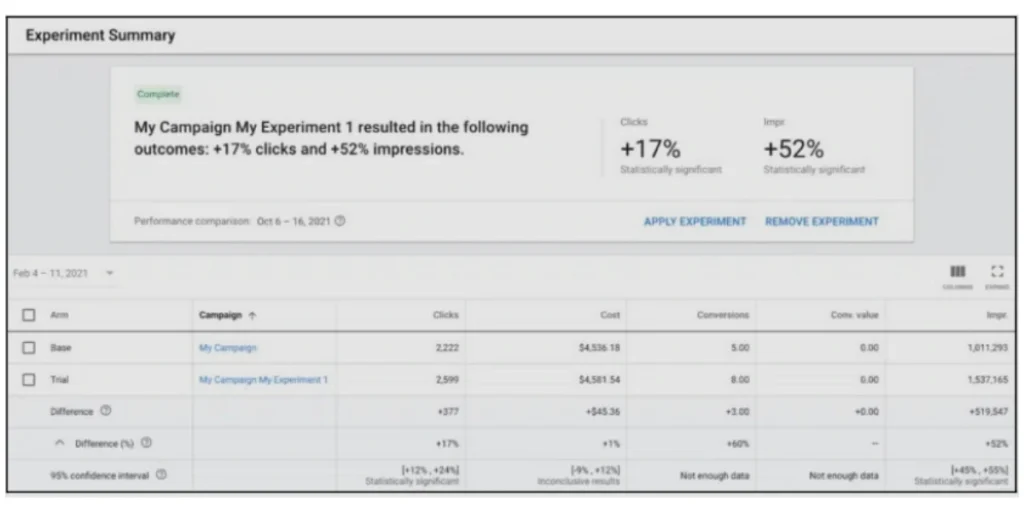
A/B testing is crucial for improving your Google Ads performance.
It involves creating different versions of your ad to see which one works best.
- Why A/B Testing is Essential: A/B testing allows you to compare different ad elements and see which version performs better. Without testing, you might miss opportunities to improve your ad effectiveness.
- Different Elements to Test:
- Headlines: Try different headlines to see which grabs attention and encourages more clicks.
- CTAs (Calls to Action): Test various CTAs to find out which prompts users to take the desired action, such as “Learn More” or “Get Started.”
- Descriptions: Experiment with different descriptions to see which clearly communicates your message and appeals to your target audience.
Leverage Ad Extensions

Ad extensions enhance the visibility of your ads by providing additional information and options for users.
- Types of Ad Extensions:
- Sitelink Extensions: Add additional links to your ads, directing users to specific pages on your website.
- Call Extensions: Add a phone number to your ad, making it easy for users to call your business directly.
- Callout Extensions: Include additional text in your ad highlighting unique selling points or offers.
- Structured Snippet Extensions: Provide additional details about your products or services in a structured format.
- Location Extensions: Show your business address and a map marker in your ad.
- Price Extensions: Display pricing information for your products or services.
- App Extensions: Promote your mobile app by adding a link to your app download page.
- How They Increase Ad Visibility and Conversion Rates: Ad extensions make your ad larger and more prominent on the search results page, increasing its visibility and click-through rates (CTR). They improve the user experience and provide additional paths for users to take, leading to higher conversion rates.
Implement Conversion Tracking

Conversion tracking is key for optimizing your Google Ads campaigns.
It helps you measure how well your ads are performing by showing which actions users take after clicking on your ads.
- The Role of Conversion Tracking in Campaign Optimization: Conversion tracking provides insights into how effectively your ads drive desired actions, such as purchases or sign-ups.
- How to Use Data to Improve Ad Performance and Conversions: Use conversion data to make informed decisions. Allocate more budget to high-performing keywords and ads, and adjust or pause those that are not performing well. Understand which demographics or devices are converting better and adjust your targeting and bid strategies accordingly.
Refine Your Target Audience

One of the most powerful features of Google Ads is the ability to target specific audiences.
By refining your target audience, you ensure your ads reach the people most likely to convert.
- Advanced Audience Targeting Options in Google Ads: Google Ads provides options to narrow down your audience based on demographics, interests, behaviours, and location.
- Using Demographic, Interest, and Behavioral Data to Reach the Right Users: Analyze data such as user behaviour, interests, and demographic information to fine-tune your targeting. This increases the chances of reaching people who are more likely to engage with your ad and convert.
Optimize for Mobile
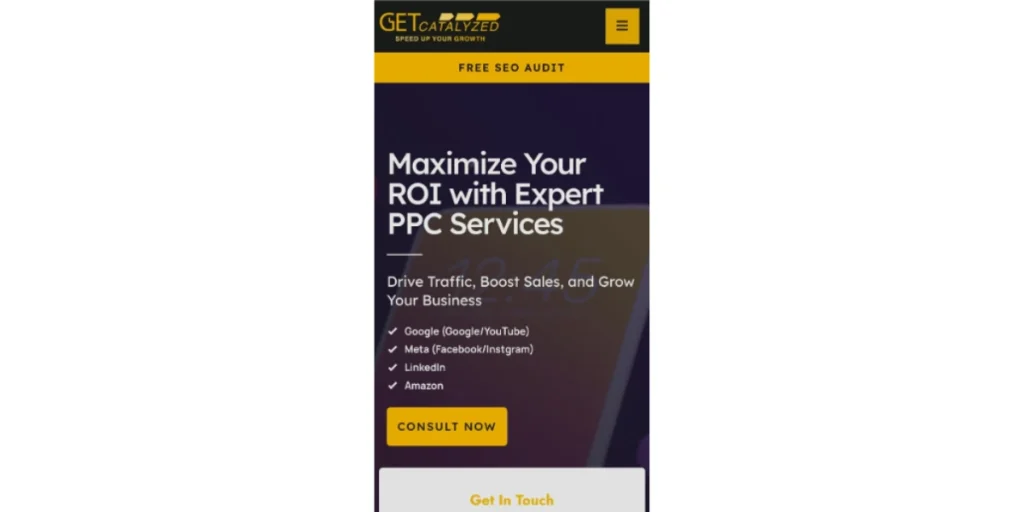
With a significant portion of Google Ads traffic coming from mobile devices, optimizing your ads and landing pages for mobile users is essential.
- The Significance of Mobile Users in Google Ads Traffic: Mobile traffic accounts for a substantial percentage of all ad clicks. If your ads and landing pages don’t cater to mobile users, you risk losing potential customers.
- Tips for Mobile-Friendly Ads and Landing Pages:
- Use Mobile-Responsive Design: Ensure your landing pages automatically adjust to fit mobile screens.
- Shorten Your Ad Copy: Keep your ad text concise for mobile users who are often on the go.
- Speed Up Loading Times: Ensure your landing pages load quickly to avoid losing visitors.
- Clear, Simple CTAs: Your call-to-action should be easy to spot and click on a mobile device.
Use Remarketing Campaigns

Remarketing helps you reconnect with users who have already interacted with your ads or website but did not convert.
It gives you a chance to bring them back and encourage action.
- How Remarketing Helps Convert Previously Engaged Users: Remarketing allows you to show targeted ads to users who have expressed interest in your product or service, increasing the likelihood they will return and complete a conversion.
- Setting Up Remarketing Campaigns to Target Non-Converted Users: Create remarketing lists based on user behaviour on your website, and set up campaigns to show ads specifically to these users as they browse other sites. Customize your ads with special offers or reminders to encourage conversions.
Remarketing helps you re-engage users who didn’t convert initially. With Get Catalyzed’s paid advertising services, we create targeted ads to bring them back and boost conversions.
Contact Get Catalyzed to maximize your remarketing efforts!
Enhance Ad Quality Score
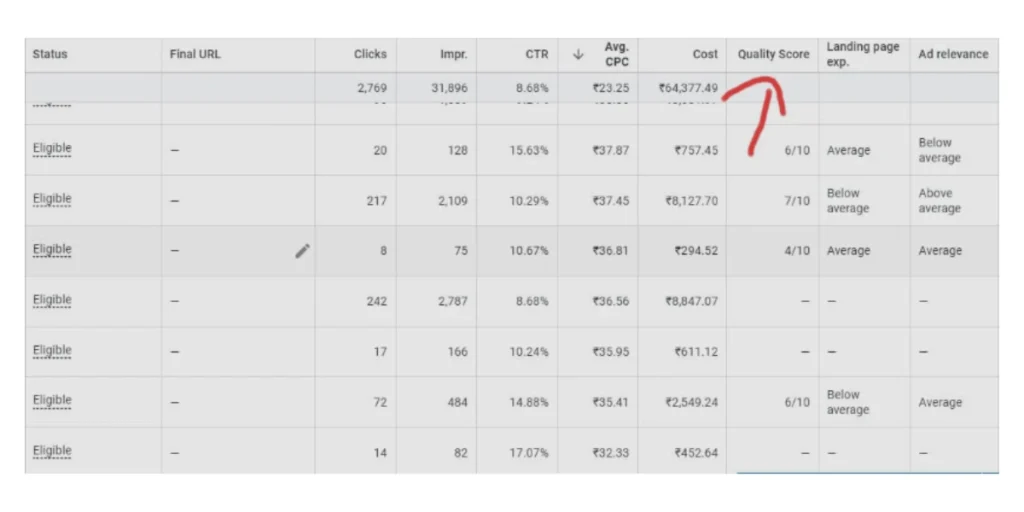
Your Google Ads Quality Score is a critical metric that affects ad performance and placement.
A higher Quality Score improves ad placement and can lower your costs.
- Factors That Influence Quality Score:
- Relevance: Your ad’s relevance to the keywords you are targeting.
- Click-Through Rate (CTR): The expected CTR of your ad.
- Landing Page Experience: The quality of your landing page in terms of relevance, load speed, and mobile-friendliness.
- Benefits of a Higher Quality Score on Ad Placement and Conversion Rates: A higher Quality Score leads to better ad rankings, higher CTR, and lower costs per click, which improves your ROAS and ad performance.
Monitor and Adjust Bid Strategy

Effective bidding in Google Ads is crucial for optimizing your budget and driving better conversions.
- Evaluating and Adjusting Bids for Better Conversions: Regularly review campaign performance to identify which keywords and ads are generating conversions. Adjust bids accordingly to maximize results.
- Using Automated Bid Strategies Like Target CPA: Google Ads offers automated bidding strategies, such as Target CPA (Cost Per Acquisition), to optimize conversions and take the guesswork out of manual bidding.
Conclusion
Improving conversion rates in Google Ads is key to maximizing your campaign effectiveness.
From optimizing landing pages and using targeted keywords to A/B testing ad copy and refining audience targeting, each strategy plays a vital role in boosting performance.
Implementing conversion tracking, focusing on mobile optimization, and leveraging remarketing campaigns can further enhance your results. Keep an eye on your ad Quality Score and adjust your bid strategy to ensure your ads perform at their best.
By applying these proven methods, you can significantly improve your Google Ads conversion rates, resulting in better ad performance, a higher ROAS, and more value from your ad spend.
For those looking to enhance their Google Ads performance and see real results, Get Catalyzed can help. Our digital marketing agency specializes in optimizing Google Ads campaigns to maximize conversions and ROAS. Contact us today to learn how we can drive success for your business!
FAQ’s
Q.1. What is a good conversion rate for Google Ads?
Answer: A good conversion rate typically ranges from 2% to 5%, though this can vary by industry. A higher conversion rate indicates better performance and ROAS, meaning you’re getting more value from your ad spend.
Q.2. How can I improve my Google Ads landing page?
Answer: To boost conversions, make sure your landing page aligns with your ad’s promise. Use clear and compelling CTAs, ensure the page is mobile-friendly, and optimize loading speeds to reduce bounce rates and keep users engaged.
Q.3. How should I use A/B testing in Google Ads?
Answer: A/B testing involves creating multiple versions of your ads to determine which performs best. Test different headlines, CTAs, and descriptions to find what resonates most with your audience and drives more conversions.
Q.4. How do I choose the right keywords for my campaign?
Answer: Effective keyword selection involves researching terms your target audience uses and focusing on long-tail keywords that indicate higher purchase intent. Regularly review and adjust your keyword strategy based on performance data.
Q.5. What is remarketing and how does it help?
Answer: Remarketing targets users who have previously visited your site but didn’t convert. By showing ads to these users, you keep your brand top-of-mind and encourage them to return and complete the desired action, improving conversion rates.
Q.6. How does the Quality Score affect my Google Ads?
Answer: Quality Score affects your ad’s position and cost. A higher Quality Score means better ad placement and lower cost-per-click (CPC). It reflects the relevance of your ad, keywords, and landing page, leading to improved ad performance.


